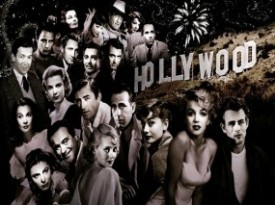Classical Hollywood started roughly between the 1910’s and 1960’s. This perios was also called as the “Golden Age of Hollywood”. And apparently, this era developed it’s own style.
A very important part of the Golden Age of Hollywood is the so-called “invisible art” or “the art of editing”. Editing should not be noticed by the audience. Each frame should flow smoothly. The viewers should be directed to the story itself and not the way frames change to another. And there, the principle of “continuity editing” or “invisible style” was born.
Another key point in the Classical Hollywood style was that most of the produced films were shot entirely on Hollywood studios. There were no outdoor shoots. And of the story requires a scene outside the studio, these were just edited to have a new background. The Hollywood studio system was dominated by the so-called “Big Five” namely: MGM, Warner Brothers, 20th Century Fox, Paramount and RKO.
On the phenomenal movie, Casablanca, flashbacks were also used in some scenes. This styles of manipulating time in films was also used in the Classical Hollywood style. It is mostly used to introduce a memory sequence of a particular character.
There was also a style in how the shots were taken and how they are arranged in the editing. On the film Casablanca, the usual patterns of the shots were like: first, medium shot of the two main characters, followed by close shots of the two characters from both of their shoulders and then a wide shot of the two to show the settings as a whole.
The narrative of a classical Hollywood film has a distinct beginning, middle and an ending. Wherein the end definitely has a resolution.
The idea of the tragic love stories from the renaissance era also has a great influence in the classical Hollywood films. Like the phenomenal play of Shakespeare, Romeo and Juliet which is a tragic love story, the film Casablanca was somehow patterned to it.
Stories wherein the two main characters in a love story never had a happy ending, makes the viewers have that emotional attachment to the story. The audience sticks to the idea that the two main characters should have been together and/or one of them doesn’t have to die. And this kind of narration is still being adapted by the modern writers and film makers like of those in the sensational film, Titanic, wherein Jack dies and Rose have to continue living until she dies of old age.

